SWOT Analysis is a popular strategy tool used since its invention in 1965 across corporates and new-age businesses. Developed at Stanford University, when aligned with the strategic goals of your company, it helps you to create a roadmap for future possibilities.
The simplicity of SWOT Analysis makes it an ideal tool to gain clarity on one's simplest to complex business or personal problem statements.
In this article, we will help you understand the concept of SWOT Analysis Marketing and how to create it with examples.
What is SWOT analysis in simple words?

Source - Freepik
Swot analysis is a framework used for strategic planning by organizations as a jumping-off point for new projects and improvement initiatives.
It is used for identifying the internal and external factors that pose potential opportunities and threats that directly impact your company's growth.
Thus, SWOT analysis is a powerful method for decision-making across broad range of business problems. This may include conducting idea validation for a new venture, deciding to enter a new market, analyzing competitors, or even making team-level decisions.
It is usually executed with a SWOT matrix, a square divided into 4 quadrants that represent each element. Thus, the term "SWOT" is an acronym for:
-
S- Strength
-
W- Weakness
-
O- Opportunity
-
T- Threat
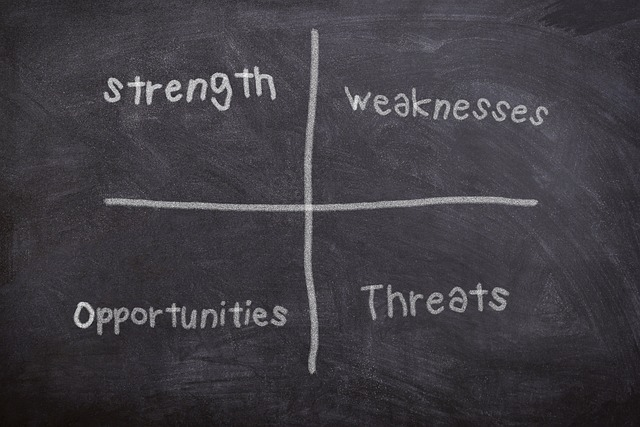
The key benefit of Swot analysis in marketing or beyond is how it makes you think before making any execution decision.
Why is SWOT Analysis good for marketing?
Airbnb sent an email campaign 'Floating World' that included a photo of floating house to indicate range of experiences they offer. Unfortunately, they released this marketing campaign as Hurricane Harvey destroyed Houstan in Texas.

Marketing is very tricky - one never knows how your harmless campaign gets perceived by people and media.

Thus, having a better control over how everyone perceives your product or marketing campaigns is crucial. One can do this by conducting marketing SWOT analysis. Apart from this, SWOT Analysis is beneficial as follows for your marketing efforts:
Visualize post campaign scenarios
Swot analysis allows you to brainstorm on how your marketing campaign could turn out to avoid mistakes in execution. It helps make complex problems well-organized and manageable by helping one look at the strengths and weaknesses together.
Helps you get realistic
One can come up with the most bizarre marketing hack, but sitting in air conditioned cabins may result in unrealistic plans. With SWOT Analysis, one can get real by knowing potential threats due to internal and external factors. One can also look at the company weaknesses across its resources, budget, team to make a better business decision.
Incporates all business perspectives
Swot analysis makes the marketer know that their strategies are dependent on the other company departments as well. Is your legal team well equipped to manage any outrage? Do you need external consultants? Many marketers often forget human resources when devising a marketing plan.
Low-cost process
Swot analysis is a simple to implement strategic tool. One can do this on a simple whiteboard or even a paper. But it helps saves cost that sometimes can even run into millions.
Helps design actionable strategies
With SWOT Analysis, one can create a marketing strategy that is indeed executable. SWOT analyses many aspects that can turn into a blind spot, especially if its due to internal factors. The end result is a marketing strategy that is usable, thorough and uses right resources of your organization.
Overall, SWOT Analysis helps shift your focus on mere company strenghts to weaknesses, opportunities and threats too. It makes you brainstorm how you can leverage external opportunities, manage internal factors that may hinder your marketing execution.
How marketers can create SWOT analysis to improve their marketing strategy?
Let's understand how marketers can do marketing SWOT analysis to identify marketing opportunities and avoid embarassing pitfalls. We also share questions to ask yourself across each section as a part of the SWOT analysis process.
Determine your goals
Your objective is the primary outcome you expect to have from your marketing efforts. Having an objective helps you eliminate weaknesses by knowing where you stand as a business with respect to that goal.
Are you firefighting an existing marketing blunder? Or do you want to get more brand impressions in your target market? Do you want more market share?
Conduct a self-awareness analysis of your company by asking below questions when working on your SWOT framework:
-
Have you done your market research and analyzed the market conditions?
-
Does your present marketing strategy align with your business plan? What is the impact of working on that marketing strategy on business operations?
-
Does your organization have a full awareness of the available resources? What is the set budget for the campaign for which you are conducting the SWOT analysis?
-
What marketing metrics and KPIs do you intend to achieve? Add numbers and timeline to create solid goals. For example, if your strategy is to increase website metrics, then number of visitors, bounce rate, conversion rate, etc are your potential KPIs.
Knowing these answers forms basis for good SWOT analysis to devise actionable strategies.
Perform market segmentation using SWOT Analysis

Industry analysis helps to determine company opportunities and threats in terms of segmentation, while internal customer data helps to determine strengths and weaknesses.
Market segmentation divides people into different groups as per their buying behaviors. Using market segmentation with swot analysis can help your business to target its marketing efforts more effectively.
For example, a business sells a health supplement. They can use swot analysis to recognize which population can be interested in their product and then target their marketing efforts as per the analysis.
If the business can recognize that its target audience is daily working professionals it can use its strengths ( such as ingredients that help to provide energy throughout the day) by using such techniques it will easily point out its weaknesses opportunities and threats as well.
Identifying your strengths
Strength is the internal factor that determines in which areas your business or marketing strategy are good. This is in comparison to the market circumstances and competitors.
You need to identify your strengths which might consist of skills such as your core competencies, a unique selling proposition, cashflow, distribution, etc. The more strengths, the more powerful case on building a strong brand against current competitors or increasing competition.
Questions to ask to determine your strengths:
-
How is your current marketing mix doing - make a list of what worked, and what did not. Did the things that worked help you achieve your marketing goals?
-
Take a closer look at your team - who performed well? Is it well diversified across skillsets? Who came up with good ideas or delivered as promised? You must ensure your team is a part of your company's strengths.
-
What available resources can you use for running the campaign? How many times can you experiment?
-
Do you have the budget for marketing tools or new technologies? If yes, do count them into strengths.
Overall, your strengths should ensure they steer you to have a unique positioning in the market. If not, work towards acquiring those strengths.
Strategize for your weaknesses
Weakness is another internal factor of your company that is holding you back to achieve desired goals.
If you have identified your weaknesses and have a proper plan to overcome them then it will thrive your marketing objectives like never before.
Questions to ask to analysis your weakness:
-
Ask yourself of potential opportunities for improvement in your marketing campaign. Many times, you may think you are coming up with nice-to-have aspects of your business, but don't overlook these as they might be threats hidden in plainsight.
-
Focus on your workforce again - Do you have adequate staff members and marketing managers? Is the number of performers more than the average performing talent? This will help you understand what you can outsource.
-
Ask your customers directly as to where you lack in terms of giving them a satisfactory or extraordinary product or service experience.
-
In your current campaigns, what went wrong? How can you ensure it doesn't happen again?
Many companies who do not perform SWOT analysis of their marketing strategies, fail because they do not work on threats. If your mistake goes viral, there is no going back to gain the lost reputation.
Identifying your opportunities
Opportunities are marketing tactics that depend on external factors. Many times, a marketing plan is devised because some marketing manager saw an opportunity to tap into!
But any campaign can also lead to more opportunities which you may discover post campaign.
Questions to ask to analysis your opportunities:
-
Conduct a market analysis on your competitors. In this, you also need to think on what they could potentially do, but are not doing. You can pick up on these few areas with your marketing strategy. If they are not using social media, then what can you do to uniquely leverage this channel?
-
Read your customer feedback, complaints and feature requests to uncover potential opportunities, product line or new market to tap into.
-
Read more about moment marketing and how you can use such external opportunities for your campaigns.
Identified opportunities can turn out to be goldmine for your business trajectory. Simple memes, tweets and social media replies go a long way to create brand impressions, and may even achieve virality.
Controlling your Threats
Threats are those elements in the market that can diminish the chance of achieving your goals. It can hurt your potential to compete against competitors.
They are the external factors that can make your strategic planning technique go underperform.
Evaluation and coming up with solutions to your external threats is the best way to save your marketing efforts.
How to have a better analysis of your Threats?
-
What could potentially go wrong with your marketing campaign? List silliest of things by brainstorming and come up with a mitigation plan.
-
What factors may result in overshooting your marketing budget?
-
Start by examining the market conditions and look at how your competitors are moving in the current economy. Look at the strategies they are following to survive or thrive in their business.
-
If you have limited resources try to decide in favor of market changes or copy competitor strategies.
Most common threats to any business is usually around arrival of new technology or emergence of new markets.
Start creating your marketing plan
Now, your marketing team should analyze all the available data in the SWOT matrix to design a plan whose primary focus is to achieve the original objective.
Apart from strengths, weaknesses, opportunities and threats, here are a few more factors that you should kept in mind for the strategy developed:
-
Customer's changing behavior patterns
-
Your competitors
-
Macro market scenes
-
Weather conditions
-
Political scenarios
SWOT Analysis Example
Let's understand how to perform the marketing SWOT analysis process with a few SWOT examples:
Burger King women's day tweet
This campaign by Burger King was a disaster as Twitter did not show the below tweets unless one opened the thread! This led to massive outrage and misunderstanding among Twitter's users about Burger King's values.
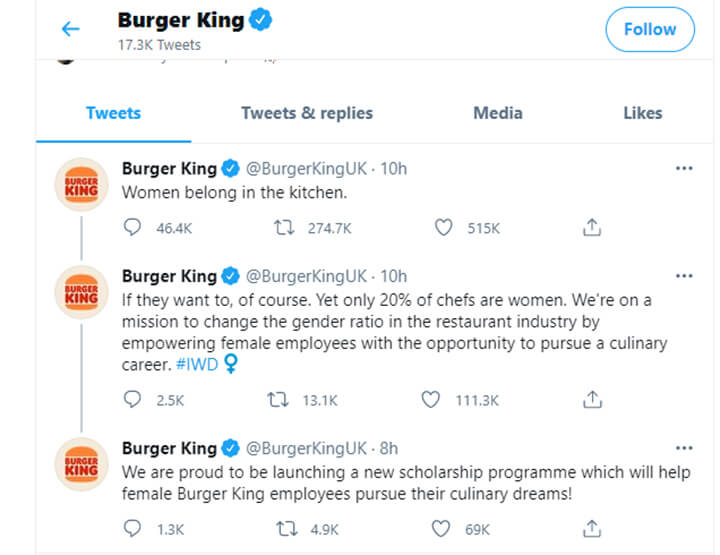
Strengths
-
Burger King has massive reach on its Twitter account
-
Has the budget to spend on ads for the tweet promotion
Weaknesses
-
Doesn't have control on how the content gets shared by people
-
Anyone can copy their tweet as a part of the trend
Opportunities
-
A chance of going viral on Twitter
-
Replies from other brands as engagement helps tap into their audience
Threats
-
Twitter users may misunderstand their tweet's intention - which is what happened too!
Apple's Super Bowl ad in 1984 swot analysis
Apple's Super Bowl Ad in 1984 was different and impactful. It was experimental and never done before too during an event as large as Super Bowl, where many brands play safe.

Strengths
-
Apple had an image of being a new-age company
-
Specific target audience
Weaknesses
-
Apple as a company was not financially sound during this campaign
Opportunities
-
People would get used to unique ads in technology space
-
Makes Apple's products relatable
Threats
-
It was trying to convey about breaking IBM's monopoly with this ad, and IBM may retaliate
-
The ad's message may not be clear to the target audience
-
A failed ad would result in wastage of money as Super Bowl ad spots are expensive
Free SWOT analysis template
We found some free SWOT Analysis templates that your organization can use to quickly get started:
Canva SWOT Analysis template
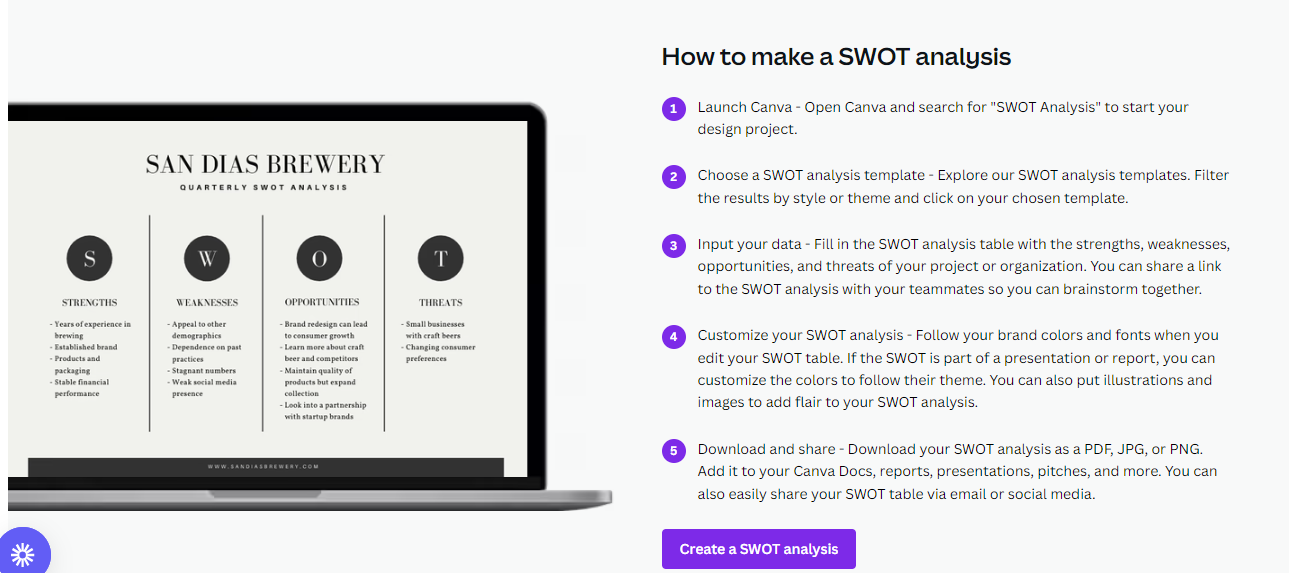
Canva has a generous free tier which consists of many ready to use templates for conducting your SWOT Analysis.
View its SWOT Analysis template here - Canva SWOT Analysis
Notion template
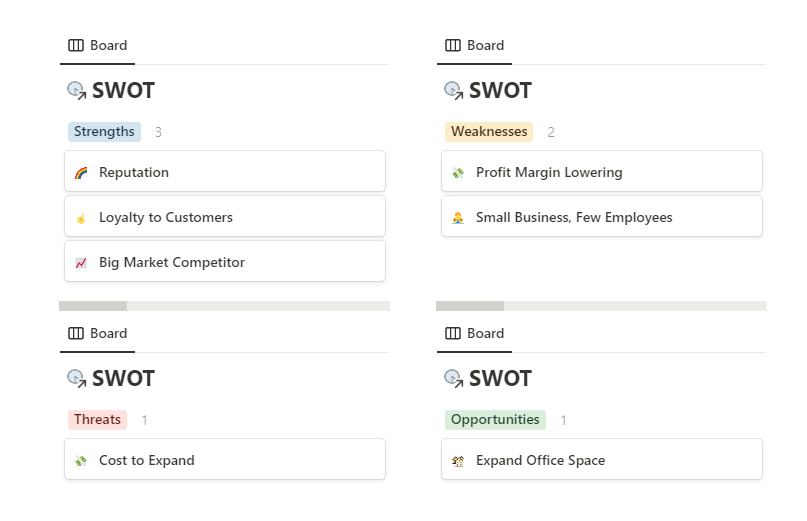
We found this Notion template by a Notion Ambassador Red Gregory that you can use if you're a Notion fan.
You can access the template here - Free Notion SWOT Analysis Template
SWOT Analysis templates on MS-Office
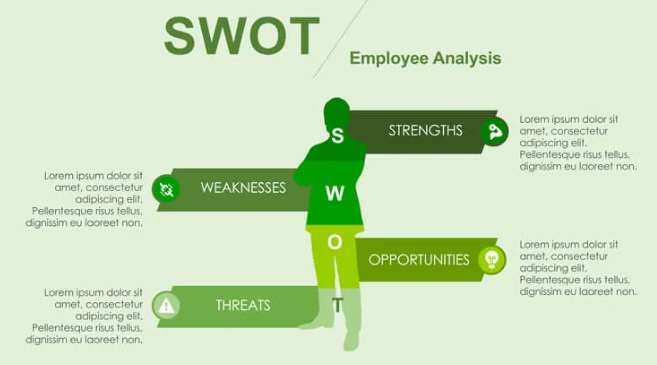
If you're using MS-Office tools like Word, Excel or PowerPoint, we found a resource that has listed all such combinations with SWOT Analysis template formats.
You can access the templates here - SWOT Analysis template
Get started with SWOT Analysis today
Swot analysis is an ideal way to create a smart marketing strategy. By identifying strengths weaknesses opportunities and threats you can develop a strong marketing plan to achieve your business goals.
Also one last thing - remember that SWOT analysis should be based on factual data that will directly affect your business environment.
You can also explore our marketing strategy case studies for brands like Pepsi, Gatorade, Apple or Nike to learn more about their marketing mix.





 Entrepreneurship
Entrepreneurship

